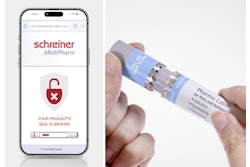The FDA approved the ENROUTE Transcarotid Neuroprotection System for use during a minimally invasive procedure to restore normal blood flow to narrowed carotid arteries.
It is the first device designed to access the carotid arteries through an incision in the neck, instead of the groin, and uses a blood flow reversal system to capture pieces of the blockage dislodged during the procedure.
“Until today’s clearance, the only FDA-cleared systems to capture and remove debris and prevent them from reaching the brain during carotid angioplasty and stenting procedures required entry into the body through the femoral artery using an incision in the groin,” said William Maisel, M.D., M.P.H., Acting Director of the Office of Device Evaluation at the FDA’s Center for Device and Radiological Health. “The ENROUTE TNS provides a minimally-invasive treatment for certain patients whose tortuous (twisted) or diseased vasculature does not permit access via the groin for treating their narrowed carotid arteries.”
The ENROUTE TNS allows physicians to insert a catheter into the artery in the neck above the narrowed or blocked section of the artery rather than having to enter through the groin. During the stenting procedure, physicians typically use a filter or additional balloon to capture and remove small pieces of debris that might be dislodged and potentially travel to the brain.
It captures debris by temporarily shunting blood flowing through the narrowed section of the artery away from the brain and into a filtering system outside the body. Blood is then returned to the body though a vein in the leg. Because the carotid artery branches into many interconnected smaller arteries, the brain still receives oxygenated blood during the procedure, according to the FDA press release.





















